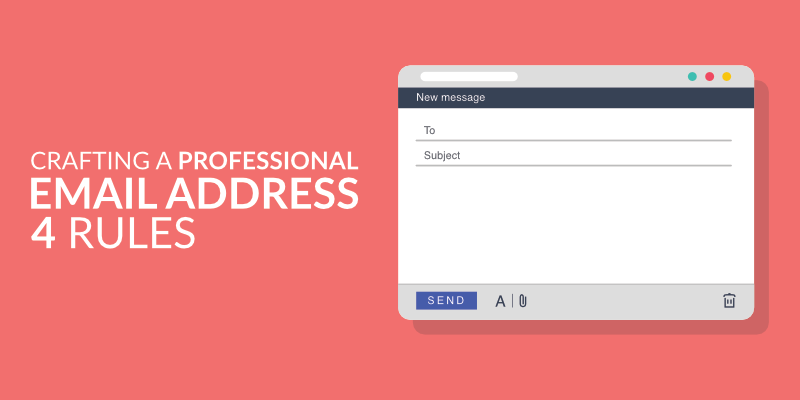
There is only one purpose for every email you ever send: for the email to be opened and avoid spam filters.
Whether you’re emailing your buddy about going to movies on Friday night, or whether your business depends on emailing and winning that tender document; both outcomes depend on whether your email is opened.
And 42% of people say that the first thing they look for when deciding whether to open an email or not is who it’s from.
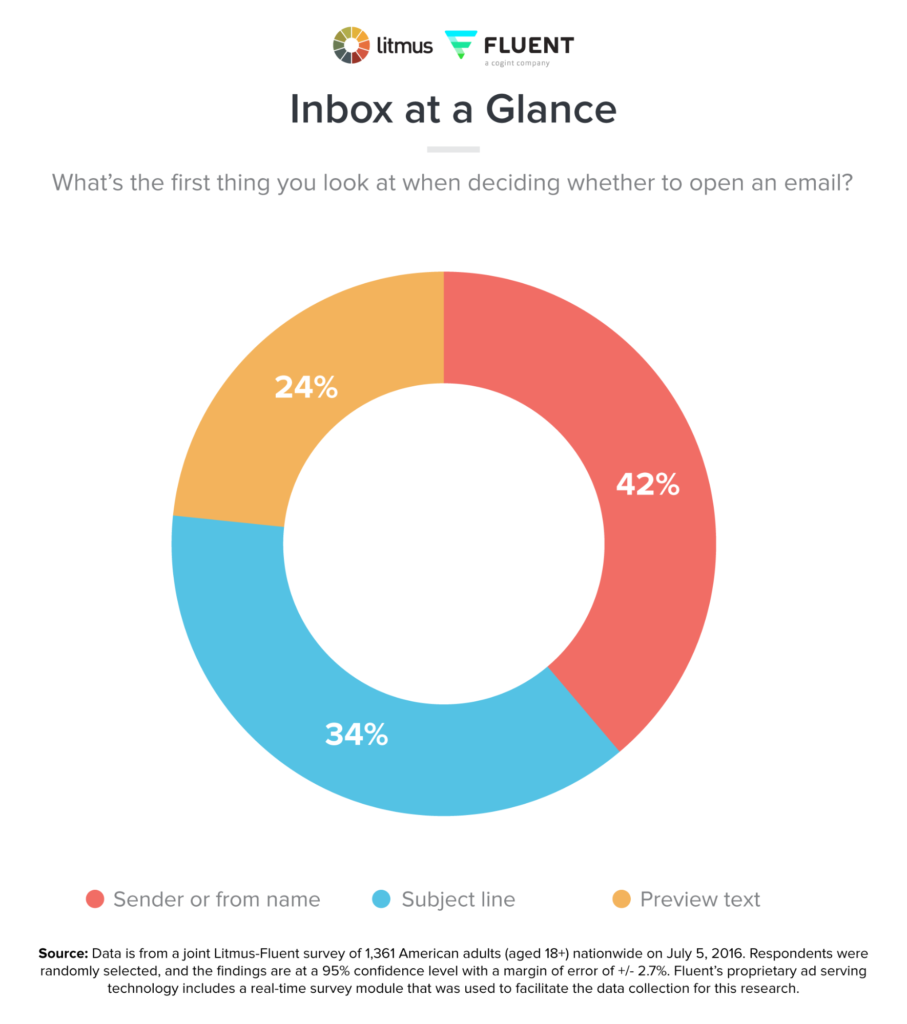
And that, ladies and gentlemen (with a drumroll), is why crafting a professional email account can mean the difference between you eating bread and butter or chicken a la king.
We think we’ve made our point.
In case you need more, you should know that in the digital sphere, making sales is all about trust and making a good first impression.
Therefore, your email address forms part of your online identity.
Why? Because people are interacting over the internet and not in person.
In the old days, sales were easier from brick and mortar buildings because both seller and buyer were interacting face-to-face.
Online business is a different kettle of fish altogether; it’s why businesses invest so heavily in adding content to their websites, and to social media.
Because they know that sales are dependent on trust.
It’s time to say goodbye to the funky, free email account you created on Yahoo when you were 16 and begin crafting your professional business email address.
[email protected] does not contribute towards building a professional image.
To follow are 4 rules on how to create your first professional email address that will achieve what you want it to achieve:
Table of Contents
Rule #1: Keep your branding consistent
Always work backwards.
You may be a one-man-show right now, but do you plan to stay as you are or do you intend to grow your business?
If you haven’t already, you need to call your business something.
You could go by your name, or you could have a registered company name.
If your website is johndoeconsulting.com, your professional email address needs to have the same domain name in order to keep your branding consistent.

Why is this important?
Firstly, keeping your branding consistent is professional. And because it’s professional, it immediately builds trust.
Think of it this way: you receive two emails; one is from [email protected], with the subject heading, “SEO consulting services”, and the other is from [email protected], with the subject heading, “SEO consulting services”.
Which of these email addresses will you trust more?
Yep, you got it. If you’re in the market for SEO consulting services, you’ll probably toss the first email account into the spam folder, but have a squiz at the second.
In the mind of the recipient, it boils down to this:
- Free gmail.com or yahoo.com email address = wannabee business, not an actual business
- Customised, valid email address = a real business
A professional email address that is consistent with your brand, and which uses the same domain name as your website and shop front, builds trust. Moreover, ensuring optimal email deliverability is equally crucial, as it helps your messages reach recipients’ inboxes reliably, enhancing your communication and engagement with customers.
And online, it is trust which sells.
Options and tools
Desktop email client
A desktop email client allows users to create, send and receive emails from their desktop.
The most well-known example of an email client is Outlook and Mozilla Thunderbird. The cons of using these email service providersare that you can only access email from your desktop.
If you travel a lot and need to check your emails from all sorts of destinations and mobile devices, a cloud-based email host may be a better option.
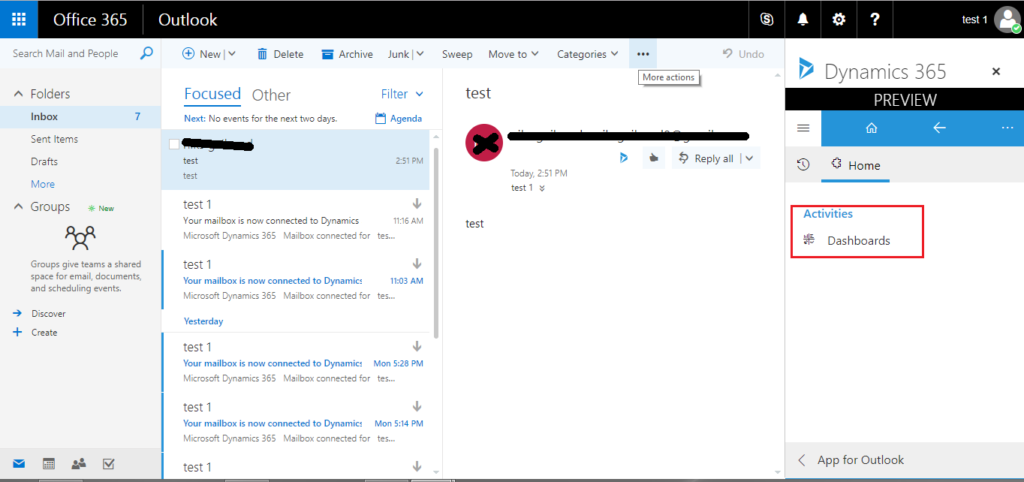
The Outlook dashboard.
Website host
The company that hosts your website offers free email addresses, and it is very easy to set them up as well as manage email accounts on them:
Here’s how to create a business email address via your web host:
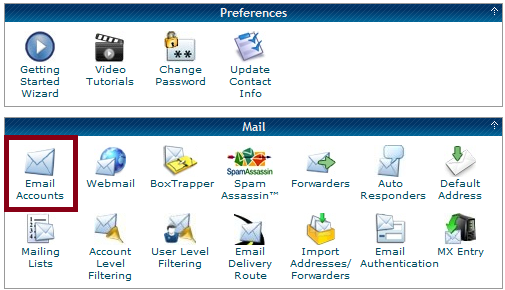
- Log into your website’s hosting control panel (cpanel).
- Click on the “Email” section and then “Email Accounts”.
- Enter the details for your new professional email address, and click “Create Account”.
- Voila! Bob’s your uncle. Professional email address sorted.
Now to access your email account, you can either log in to your webmail or set up the “forward email” function in your cpanel. This means that any incoming email to that address will be sent to another email address, like your free Gmail account.
Alternatively, use a service like Mailbird, which is especially useful if you have a few email accounts and want to manage all of them in one place.
However, you should note that Mailbird is a desktop application so you can only access your email on a device that has Mailbird installed.
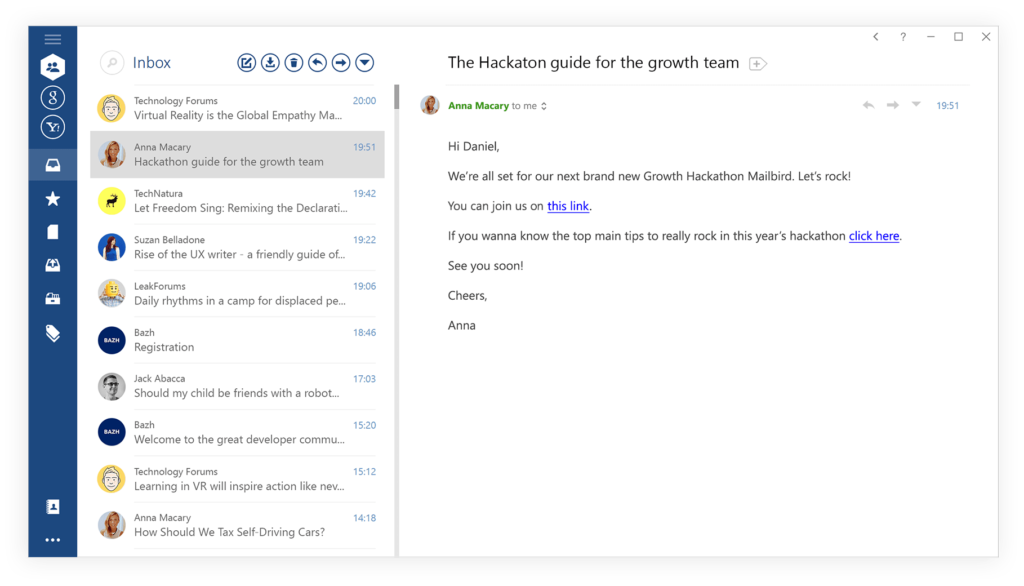
Manage multiple email addresses in Mailbird.
Get professional email address without a domain
With Neo, you can create a completely custom email address (for example, [email protected]) without needing to own or purchase a domain name. Neo also lets you publish a free one-page website at the same URL as your email (yourbrand.co.site), making it possible for users to launch their brand online in minutes.
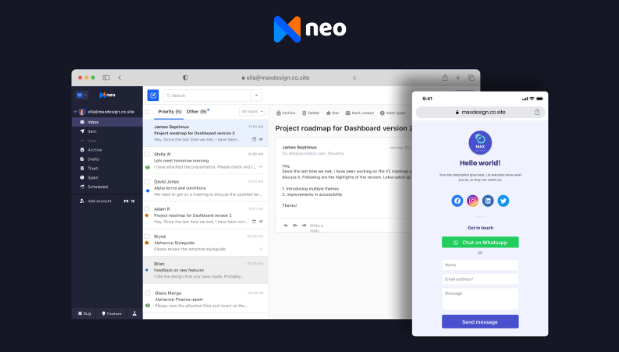
Dedicated email host
Perhaps you don’t make use of a website host. In this case, you can set up a free business email address with a dedicated host like Zoho Mail, and it’s only $1 a month, so there’s absolutely no reason to continue using a free email address that looks like a hobby instead of a business.
Here are some other options to create professional email addresses:
You can also create a G-suite account, which, for $5 per user per month, gives you a few essential tools including a professional email address.
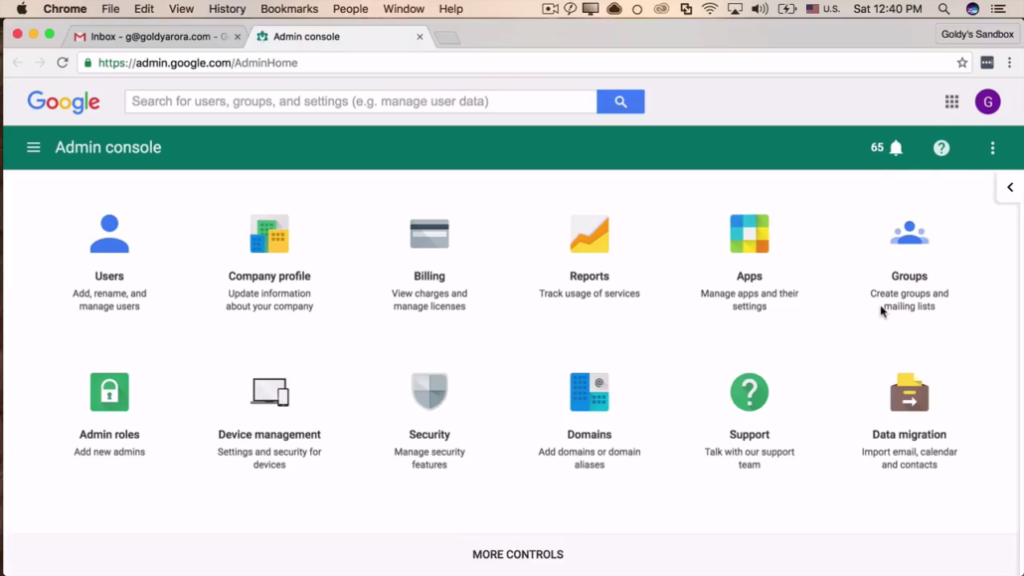
G-suite admin console.
Fastmail, which also starts at $5 pm, allows you to create and manage your business email addresses in the cloud.
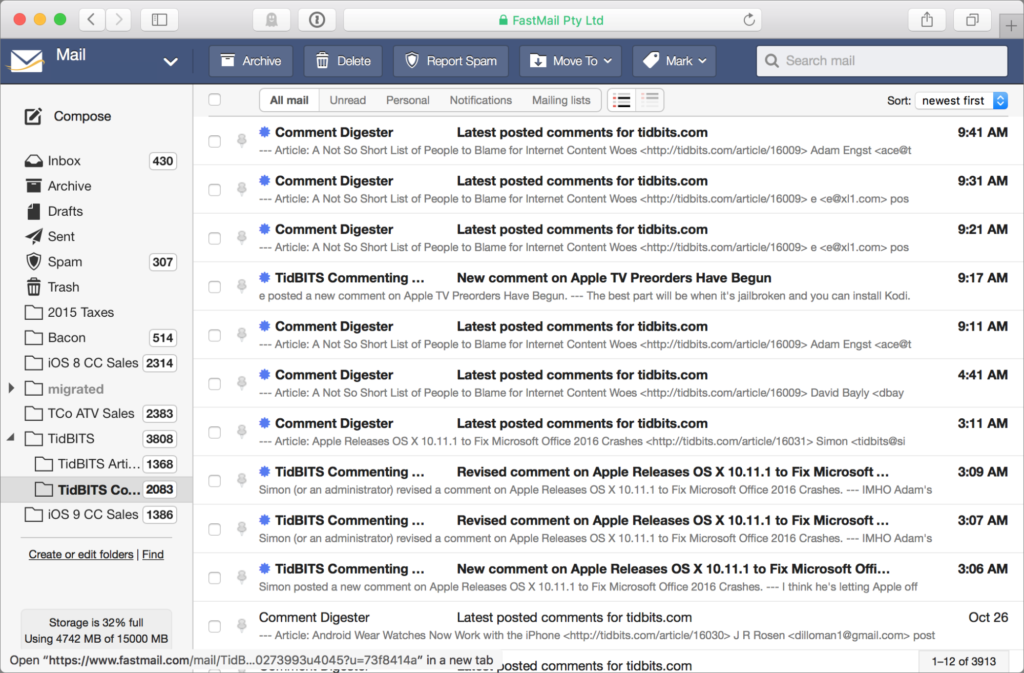
Fastmail interface.
The benefit of a dedicated email host is that you can access email from the cloud, so you can check your mail app anywhere in the world as long as you are armed with your email host login details.
Note: No matter which email provider you use, it’s always essential to keep your mailbox clean and spam-free. Achieving this can be done through various methods, such as being cautious when sharing your email address online, unsubscribing from unwanted newsletters and promotional materials, using spam filters provided by your email service, creating folders and labels to organize your messages efficiently, and periodically reviewing and deleting unnecessary emails. By adopting these practices, you can enhance your email experience, improve communication efficiency, and stay organized.
Rule #2: Don’t be fancy, keep it standard
When considering how to compile your professional branded email address, you should use a format with the end goal in mind.
If you currently don’t plan to use your email account for sales, for instance, you might be tempted to add a cool prefix or suffix, and that is OK; go ahead.
funkychicken@domain is catchy and cool if you don’t want to make sales via email.
As a business owner, you need to consider your long-term plans. If you plan to grow your business, a more conservative approach than funkychicken@domain may be better.
Sometimes it’s better to stick with the familiar for the sake of your company: not only does familiarity breed trust, but people are more likely to remember your business email address.
The standard when devising a professional email address is to create them using common formats:
First name + domain ([email protected])
The most popular email format is a first name and domain. This email account is simple and easy to remember. The only problem comes in when you have more than one person with the same first name and you need to break the format.
First name + surname initial + domain ([email protected])
The second most popular option is to use a first name, together with the initial of the surname, with domain name. When people want to send a specific person at a company an email, but they don’t know what the address is, they usually try this combination after the first name + domain name combo.
In addition, with this professional email address format, the surname of the sender is still not revealed. This format will also accommodate similar employee email accounts.
First name initial + surname + domain ([email protected])
With this format, there is less likelihood of duplicate names as opposed to the first two options. The cons of this formula are that the surname is revealed.
Full name + domain ([email protected])
If you want to use your name as a brand, this is the professional email address format for you.
What about a custom domain?
Whether you are starting a new business or running an established company, consider using a custom domain name for your professional email address.
Not only do custom domain names look more professional, but they also establish confidence in your prospective clients.
The custom domain name you use for your professional email address will likely be the domain name you use for your website.
It’s fairly straightforward to set up a custom domain name and many email service providers will give you the choice of a custom domain name if you sign up for a paid plan.
Here are a few examples of how you would use a custom domain name:
Tips for crafting the perfect professional email address
If you already own a custom domain, this part is easy because you will simply use the domain name you already own. If not, here are some professional email address ideas:
- Before you do anything, you’ll need to check whether the domain and extension you want are available. You can usually do this within the email host platform, but for a quick check, this tool will help.
- Avoid any prefix or suffix, e.g. “[email protected]”.
- Consider the domain extension. If you already have your own domain name, it will be registered with an extension (the part that comes after the word after the “@” symbol. There are hundreds to choose from.) In that case, you would simply use the one you already use for your website. But if you only want to create an email account, avoid fanciness with the extension. The best extensions are always based around your ideal target audience location, and the extension that is most common, like the primary ones (.com, .co.za, .co.uk and so on), because people remember them. Start using fancy extensions that are not common, and people won’t remember them easily. Having said that, you may not need them to remember your email address. Get an idea of the types of extensions available.
- If your domain name happens to be your personal name, you could add a role in the part before the “@” – e.g. “[email protected]” or “[email protected]”.
- Your professional email address is your online identity. Craft it carefully, to represent you as you want to be perceived. When people receive a business email from you, what do you want your email address to tell them about who you are?
Display name tips
Your email address is, well, an address. But your display name for that email can be anything you want it to be.

In this case, while the email address is “[email protected]”, the display name is “A1 Design Services Ltd”.
And this is important because display names should be based on the recipient and the action you want them to take. Here are a few scenarios to give you an idea of why you need to take into account the display name. While you go through them, allow your creativity to flow in order to think up scenarios for your own business:
- If you’re a writer and sending out cold emails to design agencies as part of your marketing strategy for sales purposes, you may want to replace a display name that points to you being an agency owner. In a case like this, you would probably get a better response rate to your emails were you to make the display name your personal name, and it might also be better to send these emails from a free Gmail address. The reason for this? Some agencies would not be interested in hiring a writing agency, but they would be interested in hiring a freelance writer. On the other hand, if you are a writer and emailing small business owners, they may be more inclined to hire a company because of their own personal perceptions, i.e. a company would know what they are doing more than a one-man person. It all depends on who your audience is, and what’s important to them.
- When you send a business email to people who do not know you but are familiar with your company, use a display name that includes the business name so that they recognise the brand.
- When sending out promotional emails to a mailing list, it is key that the display name shows the brand, because those people will know the brand, but not any of its employees.
Rule #3: Personalise for the purpose
Your personal business email address should be different to email accounts that are used elsewhere, like as a way for website visitors to get in touch.
For example, you should have professional email addresses for contact/enquiries and accounting.
The format for these email accounts would be something like, “[email protected]” and “[email protected]”.
It is not wise, and it doesn’t look professional, to add your personal email address as the primary method of communication on your website.
That doesn’t mean your life has to get more difficult because you have to check all those email addresses every day, especially if you are a small business of one. It simply means you can create certain professional email addresses for the different purposes of your business, and no one needs to know that all roads lead back to you.
All that’s required is to set up a forward rule, so that any email that comes from those generic accounts, gets forwarded to your personal email address so you view and send emails from the same place.
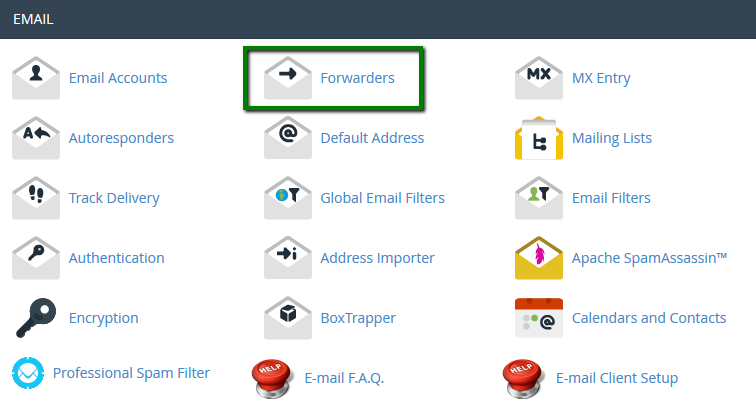
Any email host or service should include a “forwarding” option that is simple to set up. In the website host cpanel, it is also easy to set up a forwarding function.
Pro Tip: Whilst on the subject of personalisation, if you’re looking to professionalise your email outreach, then utilising personalised images can be a huge benefit. Check out this article on how to 6X your cold email results leveraging hyper-personalisation.
Rule #4: Create a professional email address signature
Even seen a gorgeous, professional email address signature at the end of an email you received, and wondered how on earth it was created?
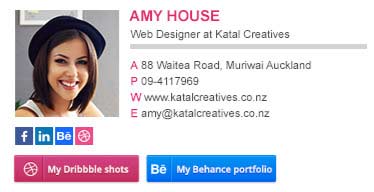
Now compare the beautiful email signature above to this outdated eyesore:
There’s no need to ask which one is going to impress you more…
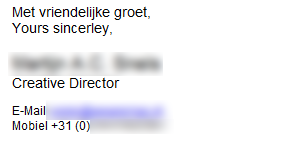
And that is true of your prospective clients too.
OK, but how do I create a professional email signature?
Quite easily, actually. You may have thought you need to be some kind of tech guru to use complicated HTML. However, what makes an email signature truly a piece of art, and more importantly, a powerful marketing and sales tool, is a signature generator, and one of them is Wisestamp.
Wisestamp offers free email signature templates – granted, the free ones have less functionality than premium versions, but free is a start, and will give you a professional email address signature.
All you have to do is add the necessary contact information and the generator spits out a signature that works with other third-party email service providers like Gmail, Microsoft Outlook, Macbook and others. Your new signature can work with any other service if you get the HTML version of it, but that incurs a cost.

The dashboard of Wisestamp. It takes a few seconds to generate a professional email address signature.
If you use your email account often and impressing recipients with a professional email address signature will help secure more business, paying for an email signature generating service will be worth it.
Take-home
In the end, your professional email address is not just a place from which to send and receive mail. It is far more powerful than that. Instead, as you’ve seen, it is a marketing tool.
To make more sales, your professional email address needs to work on your behalf to build trust, and to do that, there are three key rules:
- Keep it consistent with your brand
- Carefully consider the standard your company will use when creating business email addresses, now and in the future as your business grows
- Personalise the professional email account for every purpose
Have any ideas on how to create a professional email address that we may have missed? Share in a comment below!

4 thoughts on “How to Create a Professional Email Address: 4 Rules”